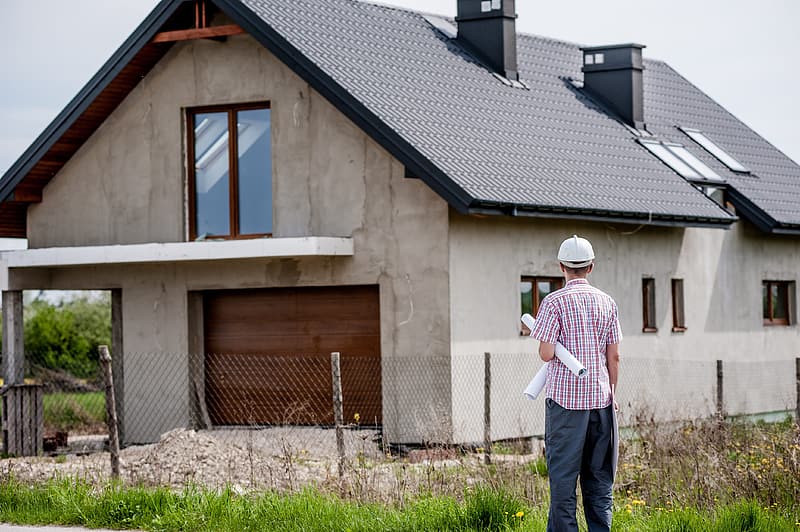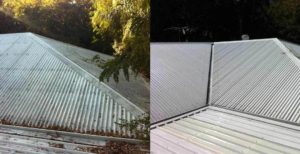What makes a building dangerous?
Dangerous buildings are structures that are structurally unsafe. It could be any structure that’s poorly planned, a building built with low quality materials, or a house that has old and compromised parts. Such scenarios, if left unfixed or unchecked, will lead to life-threatening disasters such as fire, infestation, or structure collapse.
The only logical thing to do for any builders or contractors is to minimize, if not to totally eradicate, such threats in every structures and buildings. In fact, it is an ethical responsibility of any professional involved in construction – to uphold a set of ethical standards and follow safety guidelines in order to ensure safety for stakeholders involved. One might think that such risk-reduction is exclusive to proper planning and selection of high-quality materials; however, it is also attributed to lack of and infrequent maintenance.
Structure and materials wear out overtime. If remained unchecked or untreated, it could pose a threat to people especially in times of calamities. Luckily, there are established guidelines that builders can follow in different zones and countries to make sure dwellers, occupants, or home-owners are free from hazards. Whether you’re a contractor or a home-owner, getting familiarized with such regulations is a great first step to long-term safety. It will encourage building with awareness and enable one to be vigilant in getting his or her money’s worth. Also, knowing such regulations will give an advantage in selecting durable and easyto-maintain materials. 
Building a structure isn’t just a run-off-the-mill activity. It requires a huge responsibility to the clients, dwellers, and users who depend on the stability of a structure. That is why following industry guidelines is a necessary step in construction. The National Building Code of the Philippines or RA 6541 is your definitive guideline on building a safe structure. We have listed below a concise and summarized checklist (inspired by the Dangerous and Ruinous Buildings or Structures and other best practices in construction) to give you an easily comprehensible guide of what your home or project should and should not have.
SHOULD NOT HAVE:
1. Fire, earthquake, flood and other existing damages
If you’re building or repairing a space, ask and research if an existing structure had already been subjected to fire, flooding, or earthquake. It’s important to do a 360-degree check for damages and ruins because such damages are not apparent to the naked eye. The damage may vary from charred ceiling, water-seeped wood, cracked foundations, and other damages that are hard to spot. In these instances, damaged portions must be replaced or repaired immediately instead of taking a chance and just layering or covering it with new materials.
Many collapsed housing disasters can be attributed to such inattention to detail. Materials and portions that have been exposed to water and fire become more vulnerable to slightest disturbances. Do not save and minimize cost and risk having compromised walls, ceilings, or beams. Minimize risk instead by getting rid of existing damages for good.
2. Loose portions or parts that are likely to fall apart, become dislodged or detached.
One of the nightmares that can happen during typhoons are flying debris and other parts being ripped up by strong winds. Such debris can hit other structures and create dents and other more severe damage. Even worse, such debris can hit people and cause grave accidents. Check for protruding parts as well as old attachments that already has loose hinges. Tightening such parts or replacing parts regularly will be a good practice that you will thank yourself later on.
Roofing isn’t just one of the most important part, it’s also most susceptible to being uprooted by strong winds if not installed or checked properly. Selecting durable, rust-proof, and perfectly fitted roofing will guarantee a secured and safe roof. Most houses use galvanized steel because of its properties that makes it durable. If you want to know more about durable steels you may read our separate post on galvanized steels here. You may also check https://www.ugc.ph/product/duracorr/ to see Union Galvasteel’s list of Galvanized Steel products.
3. Deteriorating portion of a structure such as faulty construction, decay, or any reason for the building to collapse
Checking the structure overall can be tricky since a faulty construction can go easily undetected. It could be new and may have a nice wonderful finish but it could go terribly wrong. It could be a substandard material covered in something new, an aged material painted fresh, or simply a wall or a support that’s placed inappropriately. Such scenarios are disasters waiting to happen. What could be worse off than an aged, brittle wall suddenly giving way after just few pressures that may happen.
Checking for deteriorating portions and replacing such deficient and subpar materials before placing or layering something new will diminish any reason for collapse.
SHOULD HAVE:
1. Adequate means of exit
A door is an article for entering and exiting a space or premise. Depending on the use of a structure, there should be enough number of exits in service of its users. This is an established regulation because exits come in handy in case of fire. Adequate means of exits have been required in building structures in referrence to incidents wherein lives could have been spared if only there are an abundance of safe, planned, and functionally designed exits.
Exits must not be served on one floor and shall not be only be placed in the direction of exit travel. These are all fortified in the Fire Code of the Philippines as a fire safety measure. Aside from making sure there are enough user-friendly exits in any establishment or housing, making sure it is working and functional to users is a continuing commitment to the public.
2. Stable accessories or sufficiently fastened ornamentation
Nothing makes a structure beautiful and elegant than a beautiful and intricate accessory – a lighting structure like a nice chandelier or an art work like a painting. These things, while they light up and improve the mood of a room, a poorly fastened or placed accessory may cause accidents to dwellers.
Regularly checking these items to see to it that they are well-fastened or strapped will be a good practice. Having properly strapped accessories or ornamentation will make it safe in times of earthquake. They should also be able to resist wind pressure especially if placed outside.
3. Enough light, hygiene and sanitation
A scrimped, dilapidated dwelling screams hazard not just for dwellers but even for its neighboring structures. The Philippines, being a little overpopulated, have a lot of close proximity housing particularly in Metro Manila. A number of fire cases has already been recorded and often, if not always, fire effortlessly spread to neighboring houses due to cramped spaces. Unfortunately, these cases aren’t limited to fire. Disease or illnesses are also easily shared in tight places. Tight spaces are also challenging for proper sanitation and proper plumbing.
Sadly, having large and spacious lots isn’t exactly an option available for everyone in the Philippine setting. However, making sure that a structure will have enough lighting, proper plumbing, and materials than can easily be sanitized is a good practice in making structures fit for habitation.
4. Fire-resistive materials
Apart from securing adequate fire exits, fire-resistive materials are also one of the requirements in building. Such is stressed upon in the Fire Code of the Philippines of 2008. It clearly states that every means and materials that can minimize danger must be incorporated in the design and installation of walls, barriers, doors, windows, vents, etc. Using materials such as walls that have one to three-hour restrictive properties is a requirement. These materials and recommendations give dwellers or occupants sufficient time for evacuation.
5. Quality Materials
One of the things to watch out for is the material. Using quality material is non-negotiable in building. Sure, a cheaper material sounds attractive but the goal is not to save, the goal is to make the structure safe for dwellers. A material may be cheap but may not be fit for what it will be used for. This advice does not encourage impractical choices but to encourage use of right and high-quality materials for the project. Remember your name is on the line as well as the safety and life-preservation of occupants.
For materials and service that are tried and tested, you may consider Union Galvasteel. Union Galvasteel has over 50 years of industry experience and has a wide-range of products and services for all your projects. They have walling materials, insulated panels, roofing accessories, and even customized materials for all your construction needs. Visit their website at: https://www.ugc.ph/aboutus/ for more information.
Building and construction comes with a certain nobility to it – You make someone’s dream home, update an existing structure, or make a space significant, safe, and functional. But it all comes with a huge responsibility. You become responsible not just toward your client but as well as the community and public safety. Remember, designing with safety as primary interest is a design that never fails



